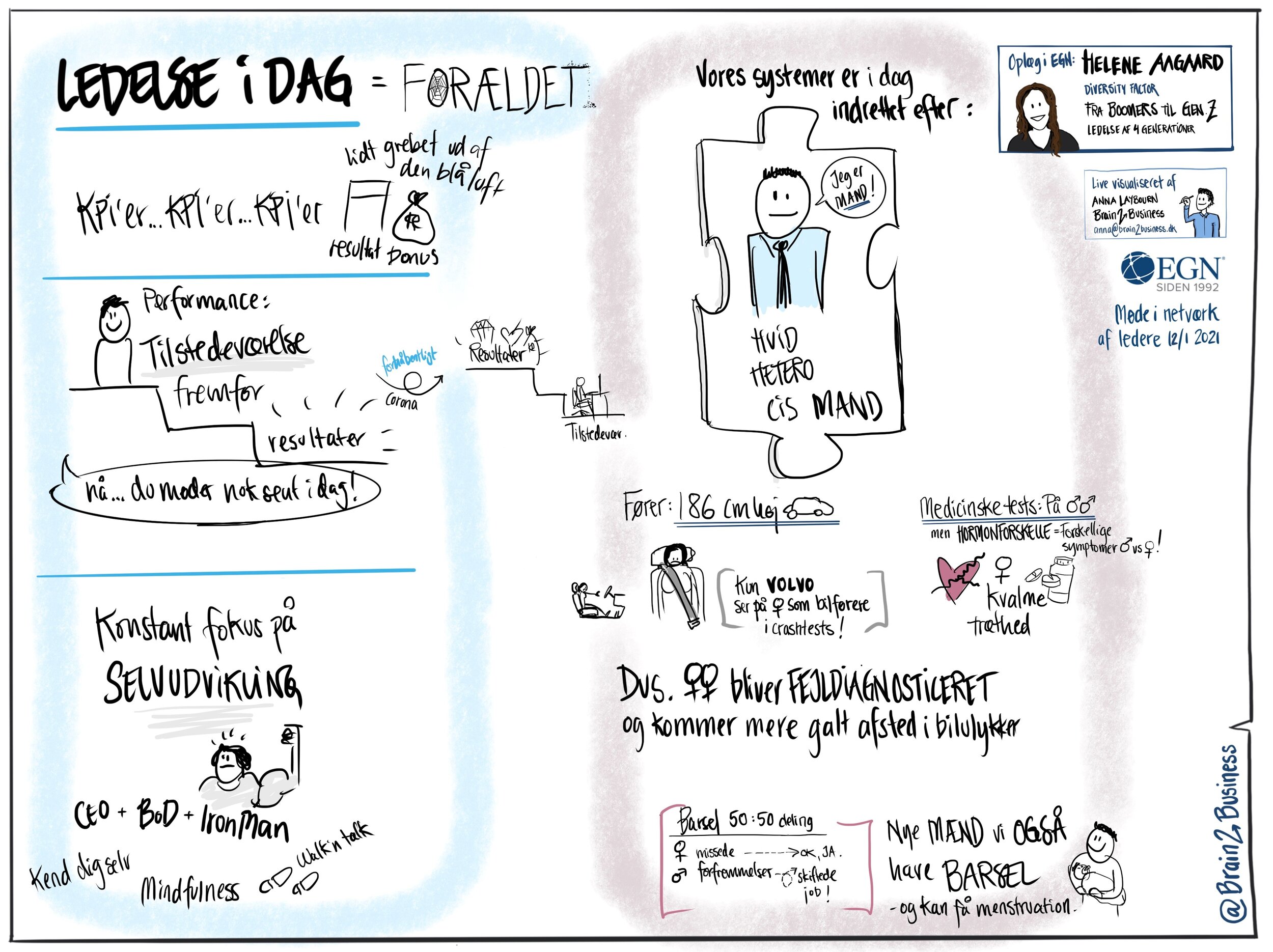From Boomers to Gen Z - Leading 4 Generations in the Workplace - Illustrations by Brain2Business
Multigenerational Workforce
Diversity Factor would like to give a big thank you to EGN Netværk and Ann Fagerdal for inviting our very own Helene Aagaard to present “From Boomers to Gen Z - Leading four generations in the workplace.”
We would also like to give a special thanks to Anna Laybourn from Brain2Business for bringing Helene’s words to life through these amazing illustrations. Tusind Tak!
Inclusive Leadership and Workplace Barriers
Workplaces are often riddled with bias, exclusive cultures, and systems that perpetuate inequity. In order, to combating these barriers leaders must be empathetic, recognizing their own unconscious biases, and creating a safe space for everyone.
Outdated Leadership Practices
Today leadership is outdated often placing greater value on the physical presence of a worker than their actual work performance and productivity. The presence-over-productivity barrier often impedes women’s’ ability to move into top management positions because companies tend to evaluate their employees on time commitment instead of their results.
Working environments and systems are often designed to serve Cis White Heterosexual men instead of making an inclusive space for everybody. For instance, it wasn’t until 2011 that countries such as the US started to use female crash test-dummies in their safety designs meaning that women were less protected than men due to crash-test design flaws. In the 1990s, Volvo became an early adopter in using female crash test-dummies - Volvo is a great example of what it means to lead with innovation and inclusion.
4 Generations in the Workplace
The workforce will continue to shift and change in demographic composition - bring together people from all walks of life. Organizations must be prepared to act as inclusive leaders in order to understand and manage a multigenerational team with different needs, values, and priorities - look carefully at the illustration above. Pay attention to the generational values and work styles because they provide insight into how each group relates to work and authority figures.
While it may sound challenging, understanding the needs of your employees as both generational groups and as individuals will bring your organization greater success.




